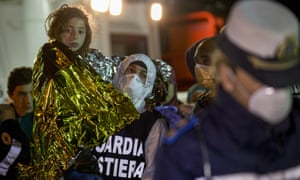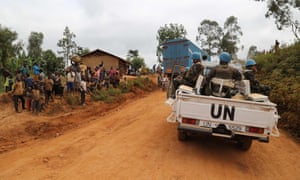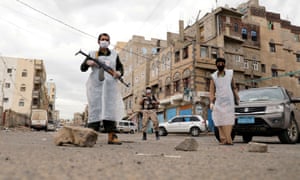by Simon Tisdall
Libya’s civil war entered its 7th year this month with no end in sight. In Afghanistan, conflict has raged on and off since the Soviet invasion in 1979. America’s Afghan war is now its longest ever, part of the open-ended US “global war on terror” launched after the 2001 al-Qaida attacks.
Yemen’s conflict is in its sixth pitiless year. In Israel-Palestine, war – or rather the absence of peace – has characterised life since 1948. Somalis have endured 40 years of fighting. These are but a few examples in a world where the idea of war without end seems to have become accepted, even normalised.
Why do present-day politicians, generals, governments and international organisations appear incapable or uninterested in making peace? In the 19th and 20th centuries, broadly speaking, wars commenced and concluded with formal ultimatums, declarations, agreed protocols, truces, armistices and treaties.
Neat and tidy endings, even if sometimes illusory, are rarer these days. According to a survey published last week by the International Institute for Strategic Studies, 60% of armed conflicts have been active for at least a decade and peace-making prospects globally are in decline.
Today’s wars are mostly undeclared, undefined and inglorious affairs typically involving multiple parties, foreign governments, proxy forces, covert methods and novel weapons. They are conducted without regard for civilian lives, the Geneva conventions regulating armed conflict, or the interests of host populations in whose name they are fought.
Great moral crusades, famous causes and genuine ideological struggles are few and far between. Modern wars are mostly about power and treasure. And they go on, and on, and on.
Libya is a classic case of a state of chaos deliberately fed and manipulated by external powers, in this instance Turkey, Qatar, Russia, Egypt and the UAE. Here, as elsewhere, rival rulers claim to be upholding order or fighting “terrorism” while, in reality, they seek to extend national influence and economic advantage. As long as these aims remain unmet, they show scant interest in peace.
Ambitious states have always sought to dominate neighbours in the way China, for example, is doing now. One reason this happens more frequently today, and more anarchically, is declining American engagement.
In the Middle East and Africa, the US – no longer a global policeman – is focused on supporting Israel, squeezing Iran and selling arms, to the exclusion of almost all else. In Asia, it is in retreat.
Donald Trump, desperate for a Nobel peace prize, offered to mediate the 70-year-old North Korea-South Korea stand-off. He also claims his “deal of the century” will solve the Israel-Palestine conundrum. Few take him seriously. Otherwise, his administration has shown zero interest in global conflict resolution.
A related factor is the collapse of the western-led consensus favouring multilateral, collaborative approaches to international problems. This is matched by the parallel rise of authoritarian and populist regimes that prioritise narrow national interest over perceptions of the common good.
This trend, a regression to the pre-1914 era of competing European nation-states, undermines the authority of the UN and cooperative regional platforms such as the EU and African Union. Unsupported, UN peace envoys from Syria to Myanmar and peacekeeping operations across Africa struggle to make headway.
Ineffective international law enforcement, symbolised by the inability of the International Criminal Court to deliver justice to war zones such as Iraq and Ukraine, helps freeze or perpetuate conflicts rather than justly resolve them. Demographic and physical causes also contribute to chronic instability.
Conflict in the Democratic Republic of Congo, the Sahel and Sudan is fuelled by the fact that millions of young men in Africa, where the median age is 19.8, lack fulfilling work or a meaningful stake in their country’s future. Long-running inter-state or intra-state violence is also rooted in the climate crisis and resulting resource scarcity, poverty and dislocation.
New technologies and weapons such as drones and cyber warfare are lowering the up-front cost of conflict while enlarging potential theatres of war. Global warming is turning the newly accessible Arctic into a vast, pristine battleground. Outer space presents infinite possibilities for violence.
Religious wars are often the most bitterly fought and hardest to halt. As in the past, multiple collisions of faith, culture and values between Christians, Jews, Muslims, Hindus and other belief systems are key elements in the early 21st century’s insatiable addiction to war.
The Muslim world is also divided internally, between the Shia and Sunni traditions and fundamentalist and secular interpretations of Islam. These schisms have been depicted by the Arabic noun fitna, which can mean both “charm, enchantment, captivation” and “rebellion, riot, discord, civil strife”.
Fitna is a fitting word for describing not only the Islamic sphere but the troubled state of the world as a whole in 2020, beset as it is by wars without end. For many people, if they are honest, war has a fatal attraction. As WB Yeats noted after the 1916 Easter Rising in Ireland, violent conflict can spawn a “terrible beauty” – a mix of fascination and horror that is difficult to forswear.
Syria
 FacebookTwitterPinterest Syrian imam Ahmed al Qasir breaks his fast during an iftar meal with orphans on 6 May 2020. Photograph: Anadolu Agency/Anadolu Agency via Getty Images
FacebookTwitterPinterest Syrian imam Ahmed al Qasir breaks his fast during an iftar meal with orphans on 6 May 2020. Photograph: Anadolu Agency/Anadolu Agency via Getty Images
An initially peaceful uprising against the autocratic presidency of Bashar al-Assad formed part of the 2011 Arab Spring revolts. It quickly turned into full-scale war as Assad’s regional foes, notably Saudi Arabia, seized a chance to overthrow a regime allied with Iran. Since then upwards of half a million people are estimated to have died.
The US and Europe also sought to install a friendly, pro-western government in Damascus. As Assad’s grip on power weakened, Russia, supported by Iran, intervened in 2015 to stave off collapse and thwart western ambitions. Other interventions came from Turkey and from Islamic State jihadists, who declared a caliphate in Syria and Iraq.
 The war continues in the north-western province of Idlib, the last rebel-held stronghold, to which millions have fled. A current ceasefire is not expected to last. There are also fears that up to 100,000 people could die there if Covid-19 spreads in crowded refugee camps. Dr Munzer al-Khalil, head of Idlib’s health directorate said: “If we do not get more support and equipment, we know we will not be able to cope. The people of north-west Syria have been through enough. We need the WHO to help and to help fast.”
The war continues in the north-western province of Idlib, the last rebel-held stronghold, to which millions have fled. A current ceasefire is not expected to last. There are also fears that up to 100,000 people could die there if Covid-19 spreads in crowded refugee camps. Dr Munzer al-Khalil, head of Idlib’s health directorate said: “If we do not get more support and equipment, we know we will not be able to cope. The people of north-west Syria have been through enough. We need the WHO to help and to help fast.”
Afghanistan
FacebookTwitterPinterest An Afghan National Army (ANA) soldier escorts Taliban prisoners this week, during their release from Bagram prison, 50km north of Kabul. Photograph: Wakil Kohsar/AFP/Getty Images
War began: September 2001
The US invasion initially aimed to kill or capture the al-Qaida terrorists responsible for the 9/11 attacks. But it quickly expanded into a “regime change” operation tasked with eliminating the Taliban and creating a functioning, democratic state.
Those latter objectives have proved unattainable despite large deployments of US, British and Nato troops and expenditure totalling billions of dollars. The elected Afghan government remains weak and divided, while the Taliban are resurgent. Pakistani, Indian, Iranian and Russian interference is a constant problem.
The US is now seeking to cut its losses and leave. But a controversial “peace deal” has failed to take hold. It is widely viewed as a mere fig-leaf for an American troop withdrawal intended to boost Donald Trump’s re-election chances.
At least 100,000 Afghans are estimated to have died since 2001, although the true figure, including deaths from indirect causes, is almost certainly much higher. According to the UN, Afghan forces and their US allies caused more civilian casualties in 2019 than the Taliban. With Isis terrorists now regularly launching attacks, hopes of peace are fading.
Libya
 FacebookTwitterPinterest A Libyan migrant is helped disembark in the Sicilian harbour of Pozzallo, Italy in April 2015. Photograph: Alessandra Tarantino/AP
FacebookTwitterPinterest A Libyan migrant is helped disembark in the Sicilian harbour of Pozzallo, Italy in April 2015. Photograph: Alessandra Tarantino/AP
War began: May 2014
Turmoil in Libya actually began in October 2011 when the dictator Muammar Gaddafi was overthrown in a popular revolt backed by the UK, France and the US. But national celebrations were short-lived.
A power struggle between myriad political factions, tribes, militias, and jihadists brought an open rupture in 2014 between the UN-backed government in Tripoli and dissenting parliamentarians who re-based themselves in Tobruk to the east.
Foreign powers with an interest in Libya’s oil and strategic orientation have since weighed in, with Egypt, the UAE and Russia backing eastern armed forces under General Khalifa Haftar, a self-styled strongman who claims to be fighting Islamist terrorism. Ranged against him is the Tripoli government supported by Turkey, Qatar and some European states. Both Moscow and Ankara have reportedly sent mercenaries to support rival sides. Last week the US claimed Russia was supplying Haftar with warplanes.
The chaos prevalent in much of Libya’s contested and ungoverned spaces has been exploited by people, arms and drug traffickers. To the consternation of Italy and the EU, the country has become a Mediterranean stepping-off point for northwards migration. UN-backed peace efforts are at a standstill.
Yemen
Security men wearing protective masks stand on a street during a 24-hour curfew, in Sanaa, Yemen. Photograph: Khaled Abdullah/Reuters
War began: March 2015
The war in Yemen, already a grievously disadvantaged country, has helped create what the UN describes as the world’s worst humanitarian disaster. Fighting has compounded perils posed by extreme poverty, malnutrition, cholera, climate change, religious extremism and now, Covid-19.
A ceasefire arranged as a result of the pandemic ended last month despite UN efforts to advance a peace process. Now the war seems to be escalating again, with new missile attacks reported last week. More than 40,000 people have fled their homes since January, adding to the 3.6 million displaced. Unicef says 12 million children need humanitarian assistance.
 The impasse owes much to the fact the main protagonists – the Yemeni government, led by exiled president Abd Rabbu Mansour Hadi, and the Houthi rebel movement, which represents Yemen’s Zaidi Shia minority – are backed by regional rivals Saudi Arabia and Iran respectively. The Saudi military intervened in 2015 after Hadi was forced to flee, backed by the US, UK and France. But while civilian casualties and alleged war crimes have rocketed, the Houthi insurgency appears largely unscathed. Meanwhile, al-Qaida terrorists are exploiting the chaos and southern separatists based in Aden have gained ground.
The impasse owes much to the fact the main protagonists – the Yemeni government, led by exiled president Abd Rabbu Mansour Hadi, and the Houthi rebel movement, which represents Yemen’s Zaidi Shia minority – are backed by regional rivals Saudi Arabia and Iran respectively. The Saudi military intervened in 2015 after Hadi was forced to flee, backed by the US, UK and France. But while civilian casualties and alleged war crimes have rocketed, the Houthi insurgency appears largely unscathed. Meanwhile, al-Qaida terrorists are exploiting the chaos and southern separatists based in Aden have gained ground.
Democratic Republic of Congo
FacebookTwitterPinterest Moroccan soldiers from the UN mission in DRC patrol in the violence-torn Djugu territory. Photograph: Samir Tounsi/AFP via Getty Images
War began: 1997
It’s hard to say exactly when the trouble began in the DRC. This vast central African country experienced an extraordinary civil war between 1997 and 2003 when an estimated five million people died. Continuing instability in lawless areas of north-eastern DRC bordering Uganda stems from that period.
International concern about an ebola outbreak in Goma, the main eastern city, has been overtaken by worries about Covid-19. Meanwhile, violence involving numerous armed groups is remorseless. At least 40 villagers were killed in recent machete attacks by the Allied Democratic Forces, a renegade militia claiming links to Isis.
About 400 people have died in Ituri province at the hands of the ADF since last year. UN peacekeepers are unable to stop the violence. And, unlike in other conflict zones, western countries are not keen to get involved. The Norwegian Refugee Council says that, overall, more than 480,000 people have been displaced in DRC since March when the UN appealed for a global ceasefire.

No comments:
Post a Comment